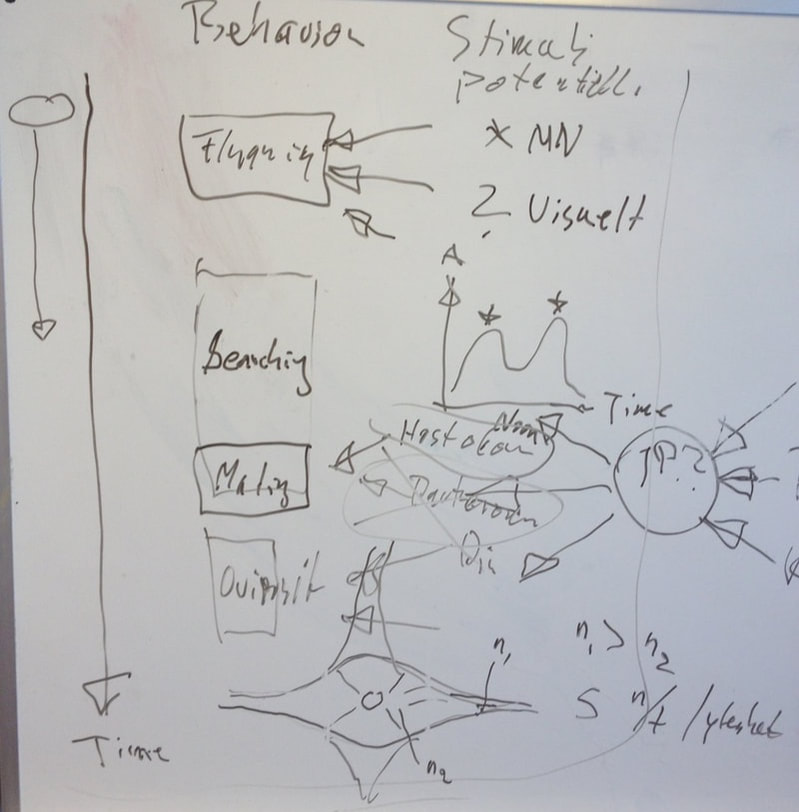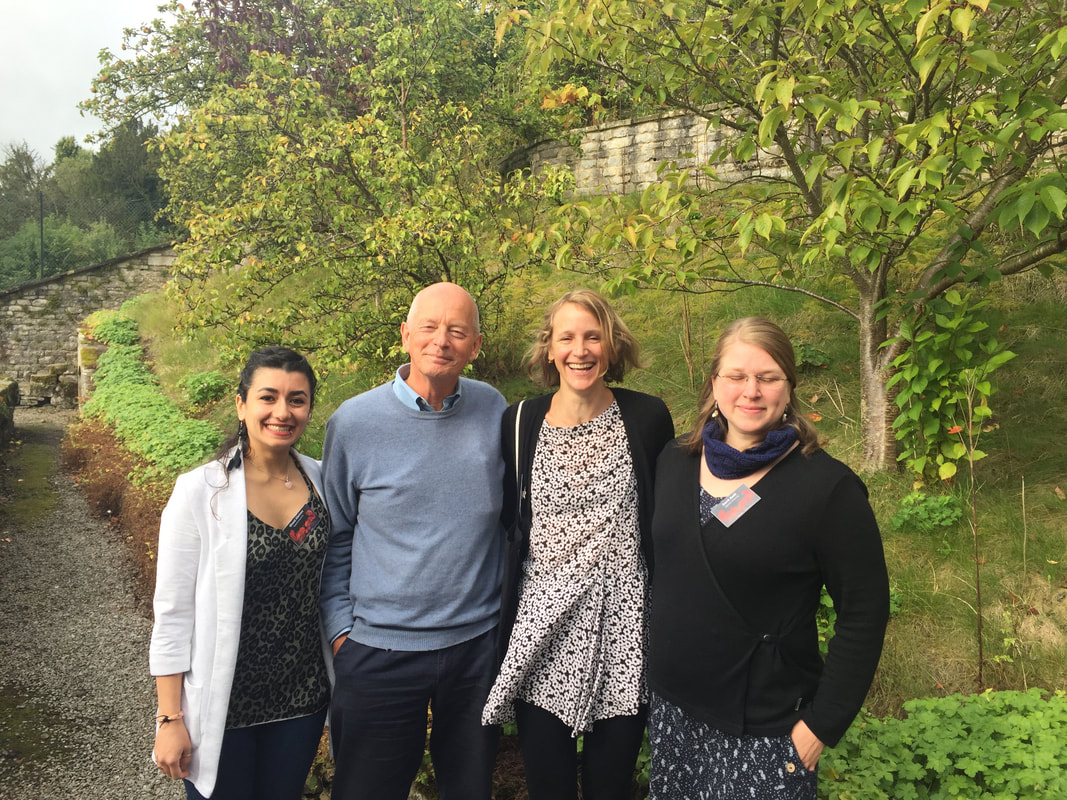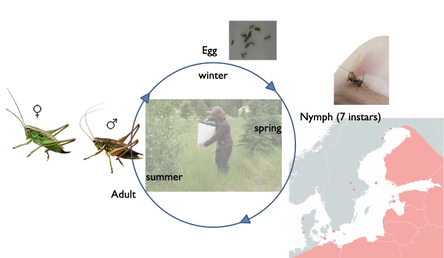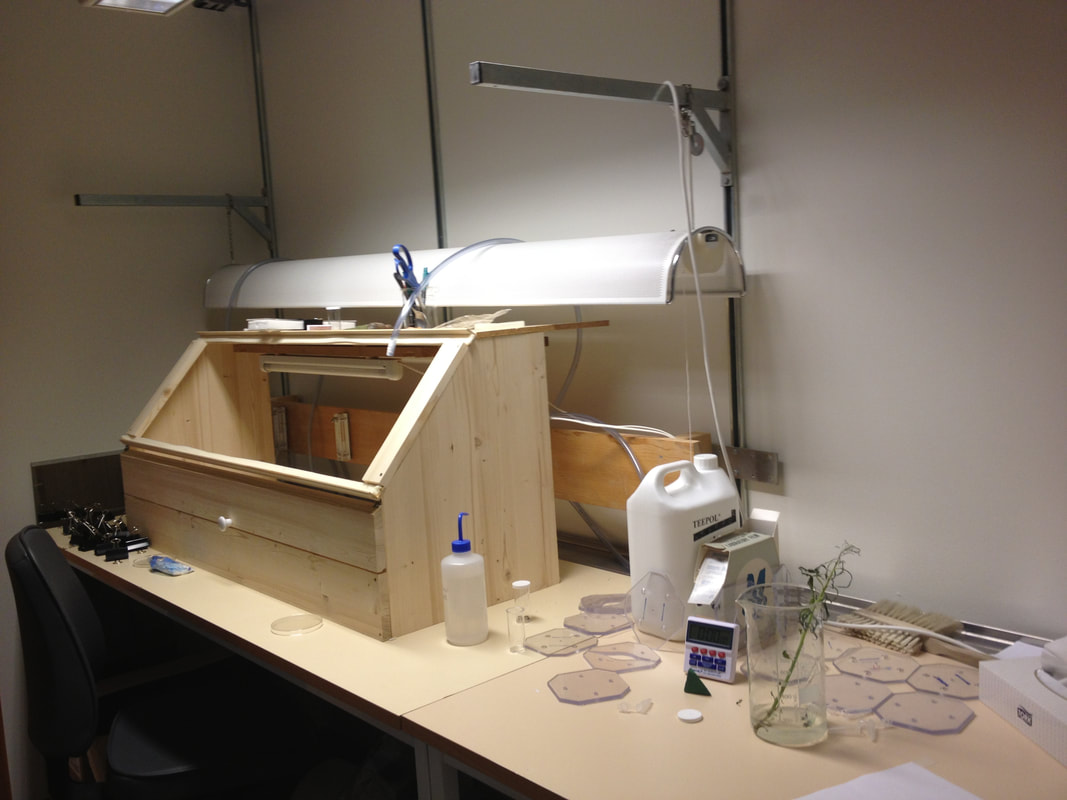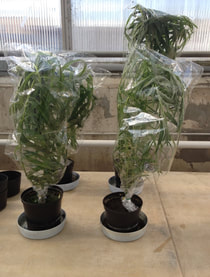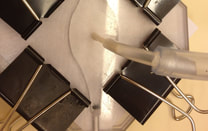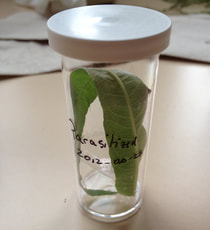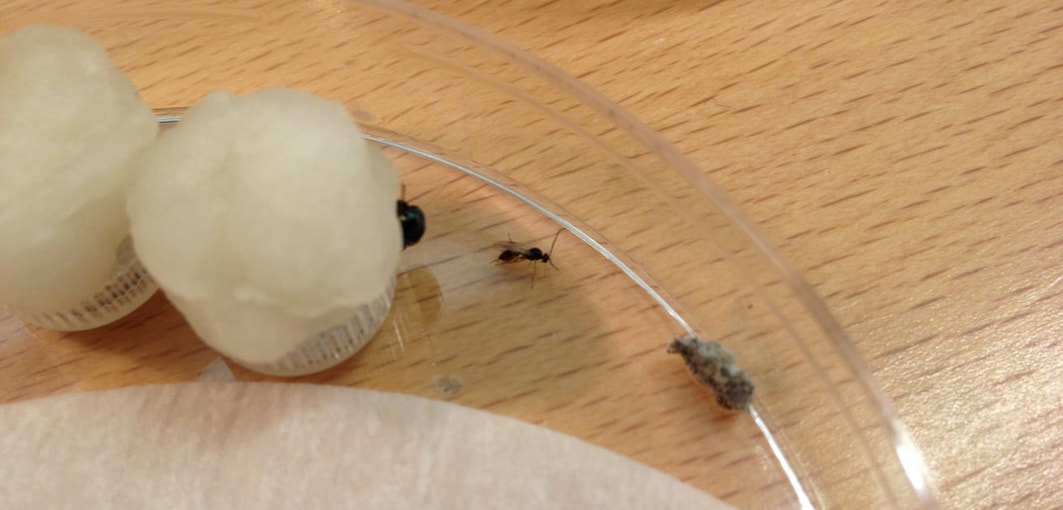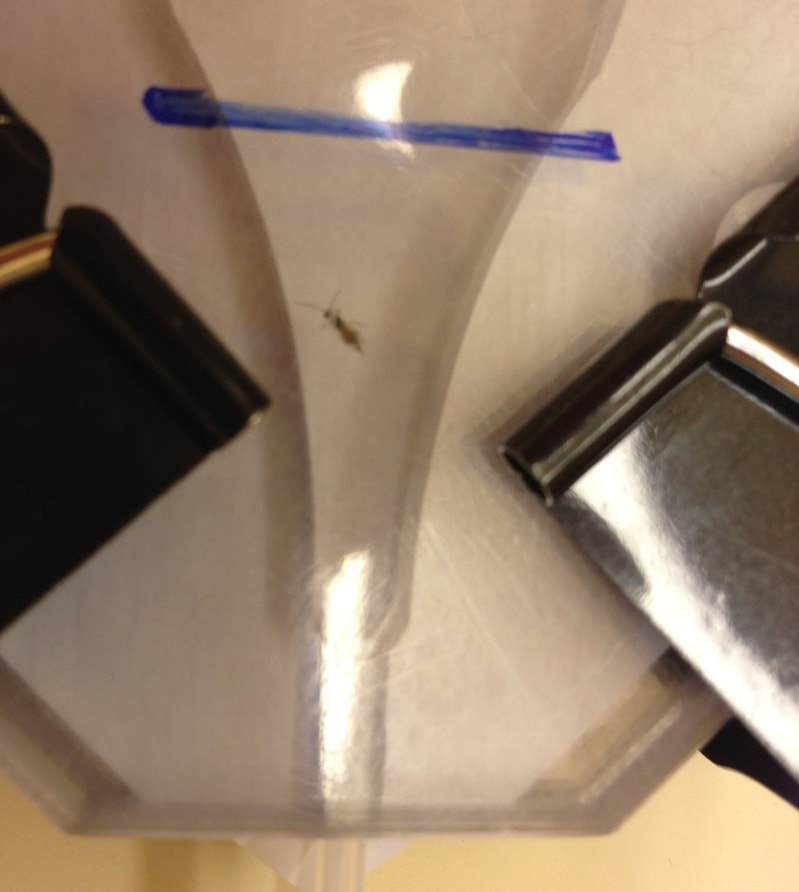Background
I received my undergraduate education in Germany at the Leuphana Universität Lüneburg where I studied Environmental Sciences (Diplom Umweltwisenschaften) at a Masters level. In the last year of my studies I was placed at SLU Uppsala in the group of Anna Lundhagen in a scientific internship of 6 months where I developed my thesis-project “Patterns of polyandry in the bush-cricket Metrioptera roeselii along a latitudinal gradient”. This project developed my love of all things science and lead to a couple of projects with local Professors at SLU Uppsala. I worked for a couple of years prior to starting my PhD education to gain insight into different fields while establishing a wide skillset and looking for a fitting PhD position.
I received my undergraduate education in Germany at the Leuphana Universität Lüneburg where I studied Environmental Sciences (Diplom Umweltwisenschaften) at a Masters level. In the last year of my studies I was placed at SLU Uppsala in the group of Anna Lundhagen in a scientific internship of 6 months where I developed my thesis-project “Patterns of polyandry in the bush-cricket Metrioptera roeselii along a latitudinal gradient”. This project developed my love of all things science and lead to a couple of projects with local Professors at SLU Uppsala. I worked for a couple of years prior to starting my PhD education to gain insight into different fields while establishing a wide skillset and looking for a fitting PhD position.
Memento with friends (Ghazal Alavioon, Tim Birkhead, Simone Immler, me) at the Biology of Sperm Conference 2017
PhD
I have been working on my PhD at Uppsala University with Simone Immler, who has now moved to the University of East Anglia, Norwich UK. My main project is to identify sperm-mediated mechanisms that may lead to non-genetic inheritance from father to offspring. To address this question, I am combining experimental manipulation of the social environment of the fathers with RNAseq of the sperm produced by these males. The main focus of my main project is to create a transcriptome of sperm RNA and to sequence sperm samples from males kept under different experimental conditions. I am also looking into piRNAs and TEs connected. These results will yield unprecedented insights into still poorly understood mechanisms and the presentation. Please see a small compilation of the cornerstones of my PhD project below.
I have been working on my PhD at Uppsala University with Simone Immler, who has now moved to the University of East Anglia, Norwich UK. My main project is to identify sperm-mediated mechanisms that may lead to non-genetic inheritance from father to offspring. To address this question, I am combining experimental manipulation of the social environment of the fathers with RNAseq of the sperm produced by these males. The main focus of my main project is to create a transcriptome of sperm RNA and to sequence sperm samples from males kept under different experimental conditions. I am also looking into piRNAs and TEs connected. These results will yield unprecedented insights into still poorly understood mechanisms and the presentation. Please see a small compilation of the cornerstones of my PhD project below.
Projects I participated in:
Limited gene flow may enhance adaptation to local optima in isolated populations of Roesel’s bush cricket (Metrioptera roeselii)
Limited gene flow may enhance adaptation to local optima in isolated populations of Roesel’s bush cricket (Metrioptera roeselii)
|
This project focuses on detecting geographical patterns in polyandry and morphology in matched pair-populations of the bush-cricket Metrioptera roeselii with different levels of isolation. Gene-flow among populations occurring in continuous areas of the species’ distribution is higher than among isolated populations and we beleive that this has influenced selection on adaptive traits (Cassel-Lundhagen et al. 2011). Data from field-collected specimens indicates that females of populations from the continuous area of distribution differ significantly in size along a latitudinal gradient and that the mating behaviour varies both in relation to size and latitude (Kaňuch et al. 2013).
|
Life cycle of Roesel's bush cricket (Metrioptera roeselii, Hagenbach, 1822)
|
Because separating genetic and environmental effects in field-based data is virtually impossible I have developed methods for laboratory rearing of M. roeselii. The established laboratory populations have been used in several studies. In our work we have examined if laboratory rearing of first- and second-instar nymphs collected from the field in spring removes enough environmental variance so we can estimate genetic differentiation in adults between populations. I worked for example with comparing body mass and morphology of individuals raised in the lab from the first and second instar stage with individuals collected from the wild in the same year. To examine the robustness of this method (comparing data from field-caught and lab-reared individuals with entirely field-reared individuals and entirely lab-reared individuals) to detect adaptive genetic variation among wild M. roeselii populations, I have also reared eggs from the previous breeding season under controlled laboratory conditions over winter. Eggs have successfully hatched and I reared this F1-generation to adulthood and recorded body mass and morphology as above. This will significantly reduce the environmental variance in growth and development of eggs and nymphs and will hopefully provide an even stronger basis for future studies on genetic divergence in body size among populations.
These projects are in collaboration with Anna Cassel-Lundhagen and Peter Kaňuch and a follow-up based on the equally named study of Cassel-Lundhagen et al. (2011).
These projects are in collaboration with Anna Cassel-Lundhagen and Peter Kaňuch and a follow-up based on the equally named study of Cassel-Lundhagen et al. (2011).
Behavior of the parasitoid Perilitus brevicollis –
Do different genotypes of Salix influence the choice of host-beetle (Phratora vulgatissima)?
Do different genotypes of Salix influence the choice of host-beetle (Phratora vulgatissima)?
|
I have been working in the Stenberg lab to unravel the influence of the three different genotypes Salix viminalis, Salix dasyclados and Salix cinerea on the behavior of the braconid parasitoid Perilitus brevicollis.
The aim of this project was to determine to what extent the genotype of the plant influences the development and host choice of the parasitoid through their host, the herbivore Phratora vulgatissima. It was reared in a common garden experiment on one of the three different genotypes of Salix and tested via olfactometric analysis. This herbivore acts as a pest organism on Salix and can affect plantations severely, once an outbreak started. The framing project to this is called “New bodyguards in Salix short rotation coppice: how can the effect of parasitoids be maximized?“, funded by FORMAS. To finance myself, I got a personal grant funded over six months by the EU programme LEONARDO DA VINCI. |
The effects of temperature stress and ivermectin on the development time of yellow dung flies (Scathophaga stercoraria)
|
In this project I worked as a laboratory assistant of Ane Laugen. It was the M. Sc. project of her student Warren Kunce, whom I helped to plan and perform factorially designed quantitative genetic common garden experiments. I also took care of the laboratory populations of the yellow dung flies (Scathophaga stercoraria).
|
A little post workshop fun and exploration of Uppsala.
Global overview on practice and research on retention forestry
In this project I assisted Lena Gustafsson in organising and hosting a work-shop with the co-authors of the papers "A major shift to the retention approach for forestry can help resolve some global forest sustainability issues" and "Retention Forestry to Maintain Multifunctional Forests: a World Perspective" which were substantially written during the workshop. I assisted in all matters from communication and coordination with the participants across continents, accommodation, entertainment to medical care and fixing the graphics for the papers while and post participating in the discussions at the workshop.
The papers coming out of this workshop:
A major shift to the retention approach for forestry can help resolve some global forest sustainability issues (DOI: 10.1111/j.1755-263X.2012.00257.x)
Retention Forestry to Maintain Multifunctional Forests: A World Perspective (https://doi.org/10.1525/bio.2012.62.7.6)
In this project I assisted Lena Gustafsson in organising and hosting a work-shop with the co-authors of the papers "A major shift to the retention approach for forestry can help resolve some global forest sustainability issues" and "Retention Forestry to Maintain Multifunctional Forests: a World Perspective" which were substantially written during the workshop. I assisted in all matters from communication and coordination with the participants across continents, accommodation, entertainment to medical care and fixing the graphics for the papers while and post participating in the discussions at the workshop.
The papers coming out of this workshop:
A major shift to the retention approach for forestry can help resolve some global forest sustainability issues (DOI: 10.1111/j.1755-263X.2012.00257.x)
Retention Forestry to Maintain Multifunctional Forests: A World Perspective (https://doi.org/10.1525/bio.2012.62.7.6)
